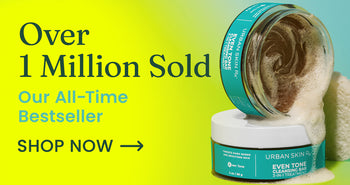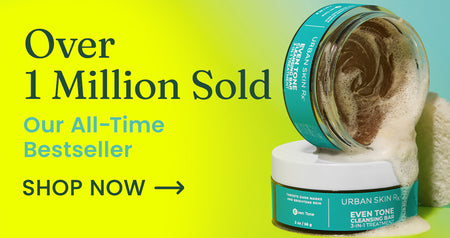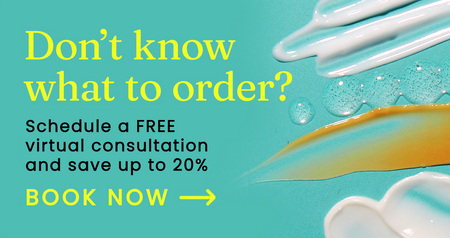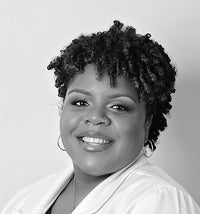Tretinoin vs. Retinol: Everything You Need to Know

When it comes to Tretinoin and Retinol, there can be a lot of confusion between the two products. Most of us have heard of them both but aren’t quite sure what the difference between them is, which we should use or if we should even be using them at all. We will break it all down for you here, so keep reading.
Let’s Start With Retinoids
First off, Tretinoin and Retinol are both considered Retinoids. Retinoids are chemicals derived from Vitamin A and can be found naturally or made synthetically. They are often used to treat blemishes but have shown to help significantly with many other skin issues as well.
The strength of Retinoids varies, and the strength you’ll need to use is based on which skin problem you’re trying to treat. Some lower strength products are available over the counter at any local drug store; however, more potent Retinoids require a prescription from your doctor. These prescription-strength products are generally used to treat more severe skin problems.
Retinoids have been shown to help with:
- Keeping pores unclogged, thus reducing breakouts
- Evening skin texture issues, like those caused by old areas of blemishes
- Hyperpigmentation, like melasma or liver spots
- Minimizing the appearance of fine lines and wrinkles
Retinoids really do seem to be the miracle one-stop-shop for most skin problems, and luckily, they’re easy to get and to use. But because they’re easy to get a hold of and are so physically easy to use, it’s important that you learn everything you can about the different products, what they’re used for, and how much (or little) you should be using at one time.
What Is Retinol?
Retinols are generally the lower strength variation of Retinoids. Many over-the-counter beauty products contain Retinol that promises all sorts of amazing benefits, and because of this, you should do your research to see which ones will work best for you. At Urban Skin Rx®, we have the right Retinol product for whichever problem area you may have.
We love our Retinol Rapid Repair & Dark Spot Treatment to help with the appearance of hyperpigmentation, fine lines, wrinkles and uneven skin tone and texture. This creamy formula contains Retinol, Kojic Acid and Niacinamide and is used nightly, so it’s so easy to work into your everyday skincare routine.
It’s definitely one of our favorites because it uses ClearTone Advanced Technology®, a combination of ingredients that work together for a healthier and more even-looking complexion.
Retinol Resurfacing Treatment Pads is another great product to have in your skin lineup. These simple-to-use pads come dry and you pour a solution over them that contains Retinol, Lactic Acid and Niacinamide to help smooth away uneven skin tone and reveal the bright, glowing skin beneath. These can be used every other night, working up to every night if your skin tolerates it well.
Finally, if your eyes are an area of concern, our Vitaleyez Retinol + Vitamin C Complex is just the product you need. This powerful eye cream has been shown to reduce the appearance of dark circles, puffiness and fine lines that can occur around the eye. Alpha Arbutin and peptides help ensure the eye area stays bright and hydrated, which is half the battle for tired-looking eyes.
As always, you can check out our site for a Virtual Consultation with an Urban Skin Rx® licensed aesthetician and learn which of our products containing Retinol are right for you!
What Is Tretinoin?
Topically, Tretinoin is the prescription strength variation of Retinoids that is prescribed to treat mild to severe acne. Along with treating acne, it has also been shown to help with skin texture, wrinkles and hyperpigmentation, much like its less intense, over-the-counter variation. Because Tretinoin requires a prescription, you’ll need to visit your doctor to get it.
Tretinoin comes in a few different concentrations ranging from 0.005 percent to 0.1 percent. This range is great for those who want to start slowly and eventually work their tolerance up to the highest dosage, the 0.01 percent. Your doctor will tell you where on the spectrum of concentrations you should start for the best results while keeping side effects at a minimum.
What Do They Do?
Though Tretinoin and Retinol can obviously help with a wide range of skin issues, they work on almost all of them in a single way: cell turnover. This is why Tretinoin and Retinol work so well for hyperpigmentation and texture issues. The quicker the problem areas renew themselves, the quicker you’ll see less of them.
For acne, cell turnover is also important. The source of acne tends to be clogged pores. By using Retinol products, the dead skin cells are sloughed away from the skin without having the chance to settle into the pores, which would lead to breakouts. And, it comes full circle back to reducing post-acne marks in the form of hyperpigmentation and texture.
Aside from hyperpigmentation and acne, the other main reasons people use Tretinoin and Retinol are for reducing the appearance of fine lines and wrinkles. Collagen helps keep your skin firm, hydrated and maintains its structure, leading to less wrinkle formation.
Which One Is Right for Me?
Choosing between Retinol or Tretinoin really comes down to what you’d like to see to achieve results. If you’re just starting with Retinoids, it may be best to try a Retinol product first as they offer lower concentrations and are less likely to irritate your skin.
Retinol is also a great product to use if you have very minimal acne or fine lines and wrinkles and would just like to start taking a preventative measure to curb aging.
However, if you have more severe acne or more advanced hyperpigmentation or wrinkles, it’s probably best to see your doctor and go over your options for Tretinoin. Results from the prescription-strength cream can bring much more drastic results, and they can be seen a lot more quickly. Your doctor will be able to go over the different concentrations of Tretinoin, and along with your desired outcome and specific skin type, can choose the best formula for you to use.
What Else Should I Know?
The most important thing you should know is that the use of Retinoids can leave your skin incredibly vulnerable to the effects of the sun’s harmful rays.
Wearing sunscreen is always a must, but if you’re using a Retinoid product, you cannot skip applying it. We recommend Urban Skin Rx® SheerGlow™ Even Tone Daily Defense Mineral Moisturizer SPF 30 for a mineral-based option that goes on sheer or Complexion Protection Moisturizer SPF 30 for clean, clear protection that won’t clog pores.
Though both Retinol and Tretinoin are very beneficial for various skin issues, they come with side effects. People who use Retinoids can often expect some redness and irritation, dryness and even some skin flaking. These side effects can vary based on the strength of the Retinoid you’re using and how well you’re moisturizing your skin after use.
No matter which product you decide to try, it’s important to start off slowly. Make sure you don’t apply the creams to a freshly cleansed face to help protect against any irritation and consider applying only a couple of times a week or every other day. Once you know how your skin tolerates the product, you can increase the frequency of applying it and, eventually, the strength of the product you’re using.
If irritation occurs, discontinue use of the Retinoid until it subsides. When you feel your skin is ready to try again, start more slowly than before by using less product, less frequently. Rather than using enough to be able to rub over your entire face, try squeezing a pea-sized amount to your fingertips, rub them together and gently press it onto the areas of your face you want to focus on.
Finally, be prepared for the chance that your skin may “purge.” Because Tretinoin and Retinol help clear out pores, they can lead to new breakouts. This is especially common for those using Retinoids for acne, but breakouts can occur even if you don’t suffer from them often.
As a recap, always remember the best ways to avoid side effects of Tretinoin or Retinol are:
- Don’t apply to a freshly cleansed face
- Use a very small amount of product
- Always follow up with a good quality, soothing moisturizer
- Wear sunscreen daily
- Don’t use any other drying facial products simultaneously, like a toner or other chemical exfoliant
So, the main difference between Tretinoin and Retinol is the product’s strength when it comes down to it.
For a less intense experience, over-the-counter products containing Retinol are great for everyday use. But if you’re looking for better, faster results, visit your doctor for the prescription strength Tretinoin. Either way, you’ll be one step closer to clearer, more glowing skin!
Engagement Manager



